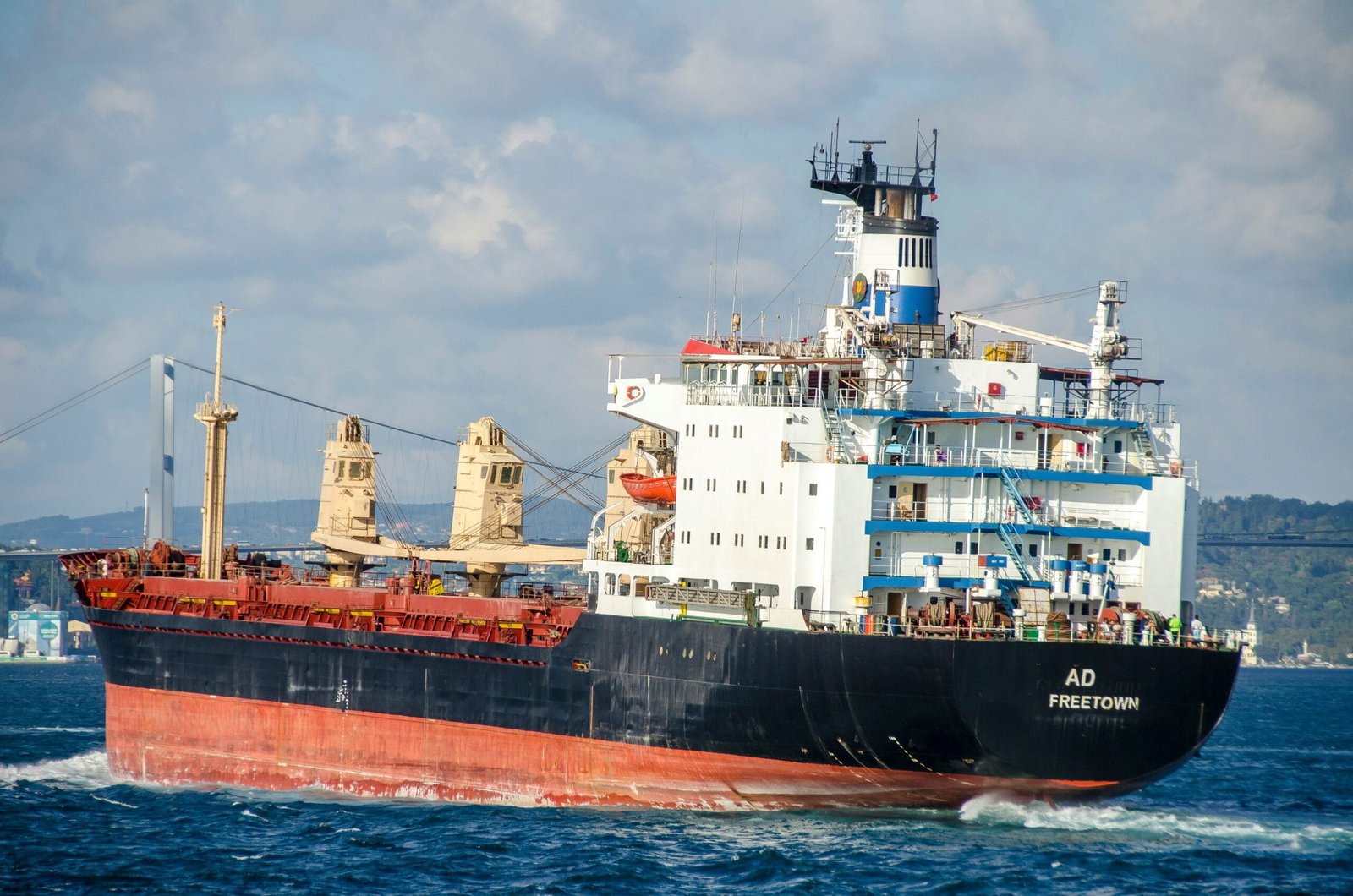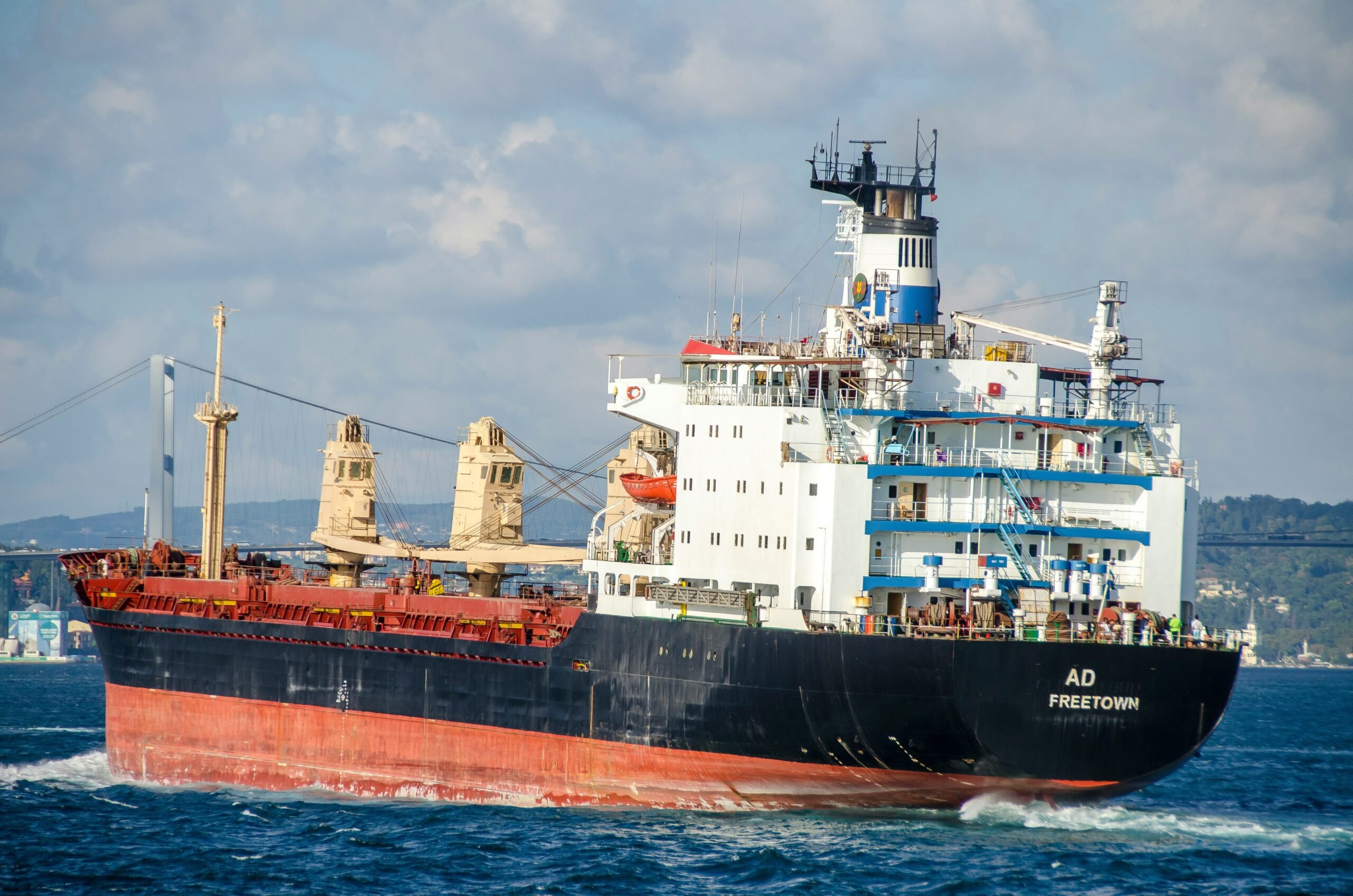Introduction to International Trade
International trade refers to the exchange of goods and services across borders, an essential element for modern economies. It encompasses a variety of activities, including the import and export of commodities, investment across nations, and the establishment of supply chains that span multiple countries. This exchange allows nations to optimize their resources, access goods not available domestically, and enhance their economic growth through comparative advantage.
At the core of international trade are several foundational theories that explain how and why countries engage in global commerce. The theory of comparative advantage, for example, illustrates that nations benefit by specializing in the production of goods where they hold an efficiency edge. This specialization not only boosts the production levels of goods but also leads to cost reductions, ultimately benefiting consumers through lower prices and increased product variety. Additional trade theories, such as absolute advantage and Heckscher-Ohlin theory, further elucidate the factors influencing international economic interactions.
More information Understanding the Principles of Free Trade: A Path to Mutual Benefit
Understanding the Principles of Free Trade: A Path to Mutual BenefitCountries participate in international trade for various reasons, including the pursuit of economic growth, job creation, and access to advanced technologies and international markets. However, trade is not merely about economics; it is also a platform for political alliances and cultural exchanges. Nations often pursue bilateral and multilateral trade agreements to enhance economic cooperation and reduce trade barriers, fostering smoother transactions and stability in global markets.
In today’s interconnected world, international trade dynamics are profoundly influenced by technological developments, international regulations, and geopolitical considerations. Understanding these dynamics provides insights into the intricate relationships that shape global economies. The exploration of these concepts forms the foundation for more in-depth discussions on economic cooperation, trade policies, and the implications for development in an increasingly globalized environment.
The Concept of Global Exchange
Global exchange refers to the interconnected system in which goods, services, and capital move across national borders. This intricate network facilitates trade between countries, fostering economic growth, innovation, and cultural exchange. The evolution of global exchange has been significantly influenced by advancements in technology, transportation, and communication, allowing for a more fluid interaction among markets worldwide.
More information The Role of Government Economic Intervention: A Critical Institutional Analysis
The Role of Government Economic Intervention: A Critical Institutional AnalysisTrade barriers, such as tariffs, quotas, and regulatory restrictions, can impede the flow of goods and services. The reduction of these barriers has been a pivotal aspect of international trade policies, leading to an environment where commerce can thrive. Free trade agreements and international organizations aim to establish standardized practices that promote openness and mutual benefit among nations. As barriers diminish, companies can access new markets and customers, thereby enhancing competition and efficiency.
Globalization plays a critical role in shaping trade dynamics by expanding the reach of businesses beyond their domestic borders. This phenomenon has led to a surge in trade volume, enabling countries to specialize in producing goods and services that leverage their unique resources and capabilities. While the benefits of globalization include increased economic growth and consumer choice, it also poses challenges such as income inequality and the exploitation of labor in developing nations. The interplay between these advantages and disadvantages raises questions about sustainable practices and equitable trade.
Ultimately, understanding the concept of global exchange requires a comprehensive analysis of how it shapes economies and societies. Policymakers and business leaders must navigate the complexities of international trade while addressing the inherent challenges that arise from deeper global integration. By fostering a balanced approach, it is possible to harness the benefits of global exchange while mitigating its negative impacts, ensuring a more inclusive and cooperative trading environment.
More information Examining Taxation Dynamics: Analyzing the Economic Consequences of Fiscal Policy
Examining Taxation Dynamics: Analyzing the Economic Consequences of Fiscal PolicyDefining Comparative Advantage
Comparative advantage is a fundamental principle in international trade that illustrates how countries can maximize their economic potential by specializing in certain goods and services. This concept posits that countries should focus on producing goods for which they hold a relative efficiency advantage, thereby minimizing opportunity costs associated with production. When a nation specializes in the production of goods that they can produce more efficiently compared to other nations, it enables them to trade these goods for items that they are less efficient at producing. Consequently, this trade culminates in a situation where both countries involved benefit, enhancing overall welfare.
The principle of comparative advantage is often associated with notable economists such as David Ricardo, who demonstrated that even if one country is less efficient in producing all goods compared to another, there still exists the potential for mutually beneficial trade. For instance, if Country A is more efficient in producing both textiles and machinery than Country B but has a greater advantage in textiles, it is beneficial for Country A to specialize in textiles. Meanwhile, Country B, despite being less efficient overall, should focus on machinery where its inefficiencies are comparatively smaller. This approach leads to an increase in total production efficiency, as resources are allocated according to relative advantage.
The positive implications of comparative advantage are manifold. Firstly, it encourages efficiency in production, optimizing resource allocation within economies. Secondly, by engaging in international trade, countries can access a broader range of goods and services, enhancing consumer choices and potentially lowering prices. Lastly, the specialization fostered by comparative advantage can stimulate economic growth, as countries leverage their unique strengths and trade for other necessities. By understanding and applying the principle of comparative advantage, nations can navigate the complexities of global trade, facilitating development that benefits all parties involved.
More information Understanding Competition Policy: Ensuring Fairness in Market Dynamics
Understanding Competition Policy: Ensuring Fairness in Market DynamicsEconomic Cooperation in Trade
Economic cooperation plays a crucial role in fostering international trade, as it enables countries to enhance their trading relationships while promoting mutual benefits. Through various forms of cooperation, such as trade agreements and alliances, nations can lower tariffs, reduce trade barriers, and create a more predictable trading environment. These partnerships not only facilitate international exchange but also contribute to economic growth and stability in participating countries.
Trade agreements, both bilateral and multilateral, serve as essential tools for enhancing cooperation in international trade. Such agreements establish the framework for trade relations, outlining the terms and conditions under which countries trade goods and services. By reducing or eliminating tariffs, these agreements can lead to increased trade volumes and greater market access for exporters. Prominent examples include the North American Free Trade Agreement (NAFTA) and the Comprehensive and Progressive Agreement for Trans-Pacific Partnership (CPTPP), both of which illustrate how cooperation can significantly impact regional economies.
In addition to formal trade agreements, economic alliances and regional partnerships further strengthen cooperation. Organizations like the European Union (EU) provide a platform for member states to work collectively on trade policies, allowing them to present a united front in negotiations with non-member countries. The establishment of customs unions and economic communities fosters deeper economic ties among participating nations, facilitating smoother and more efficient trade flows.
More information Navigating International Commerce: A Comprehensive Guide to Trade Philosophy
Navigating International Commerce: A Comprehensive Guide to Trade PhilosophyInternational organizations, such as the World Trade Organization (WTO) and the International Monetary Fund (IMF), play pivotal roles in facilitating economic cooperation by establishing rules, standards, and best practices for trade. By providing a forum for negotiation and dispute resolution, these organizations help to maintain stability in international commerce. They further support developing nations by promoting inclusive trade policies that allow for more equitable participation in the global economy.
Breaking National Economic Barriers
National economic barriers significantly impede the fluidity of international trade, posing challenges that can lead to reduced economic efficiency and innovation. Among these barriers, tariffs, quotas, and non-tariff barriers remain prominent, each influencing the flow of goods and services across borders. Tariffs, which are taxes imposed on imported goods, increase the cost of foreign products, making them less competitive against domestic offerings. This leads to higher prices for consumers and can instigate trade disputes among nations.
Quotas, on the other hand, directly limit the quantity of goods that can be traded, creating an artificial scarcity that can disrupt market dynamics. By capping imports, quotas protect local industries from foreign competition, but they simultaneously reduce variety and choice for consumers. The imposition of such restrictions often sparks retaliatory measures, perpetuating a cycle of trade barriers that hinders economic growth.
Additionally, non-tariff barriers, which encompass a range of regulations and standards such as licensing requirements, safety standards, and import permits, can be just as restrictive as tariffs or quotas. These barriers complicate the entry of foreign products into domestic markets, disproportionately affecting smaller businesses that may lack the resources to navigate such regulatory complexities.
In light of these challenges, there is a compelling need for the development of policies that promote open markets. Such policies aim to foster economic collaboration among nations, ensuring that trade remains a catalyst for growth and innovation rather than a source of contention. This requires a concerted effort from policymakers to dismantle existing barriers, paving the way for a more integrated and dynamic international trade system. Ensuring that markets operate with fewer restrictions not only benefits businesses but also enriches consumers by providing them with a greater assortment of goods at competitive prices.
The Role of Technology in Trade Dynamics
In the contemporary landscape of international trade, technology plays a pivotal role in shaping the dynamics of how goods and services are exchanged across borders. The advent of e-commerce has revolutionized traditional business models, enabling companies to reach global markets with unprecedented ease. By leveraging digital platforms, businesses can now sell directly to consumers around the world, bypassing intermediaries and reducing costs. This shift not only enhances market access for small and medium-sized enterprises but also promotes competitive pricing, benefiting consumers globally.
Moreover, advancements in logistics technology have significantly improved the efficiency of supply chains. Innovations such as automated warehousing, real-time tracking systems, and advanced data analytics allow businesses to optimize their inventory management and shipping processes. These enhancements lead to reduced transit times and lower operational costs, thereby fostering a seamless flow of goods across borders. By streamlining logistics processes, technology mitigates the barriers that often hinder international trade, allowing for more agile responses to market demands.
Another noteworthy development in trade dynamics is the rise of digital currencies and blockchain technology. These innovations introduce new possibilities for secure and efficient cross-border transactions. Digital currencies, such as cryptocurrencies, offer an alternative to traditional banking systems, reducing transaction fees and eliminating the need for currency conversion. Blockchain technology further enhances transparency and security in trading, as it enables the creation of tamper-proof records of transactions. This fosters trust among international trade partners, promoting a more stable trading environment.
Overall, the influence of technology on international trade dynamics cannot be overstated. It enhances market access, streamlines logistics, and introduces secure methods of transaction, which collectively facilitate smoother global exchanges. As the digital landscape continues to evolve, it will undoubtedly unlock further opportunities for trade innovation and growth.
Impacts of Trade on Global Economies
International trade serves as a pivotal driver of economic development, facilitating the exchange of goods and services across borders. One of the most significant positive impacts of trade is its contribution to economic growth. By enabling countries to specialize in the production of goods where they have a comparative advantage, trade can lead to more efficient resource allocation. This specialization can result in increased productivity and, consequently, higher levels of national output. Countries that engage extensively in international trade often experience accelerated economic development, as access to broader markets can stimulate investment and innovation.
Moreover, trade can enhance wealth distribution by providing consumers with a wider variety of products at lower prices. This increased competition can foster a more dynamic marketplace, benefiting consumers through better quality goods and services. For developing nations, integration into the global trade system can attract foreign investment and technology transfer, driving growth and enhancing local capabilities. These factors can collectively increase the overall standard of living in participating countries.
However, the impacts of international trade are not universally positive. One significant downside is job displacement, particularly in sectors exposed to international competition. As markets open up and local industries face import competition, some domestic jobs may be lost, leading to economic and social challenges. Workers in industries unable to adapt or compete may find themselves without employment, thereby contributing to income inequality. Additionally, regions heavily reliant on specific industries can experience devastating effects, with some communities facing long-term economic decline.
In conclusion, while international trade fosters economic growth and offers consumers greater choices, it also presents complex challenges that nations must navigate carefully. Balancing the benefits and drawbacks of trade is essential for sustainable development in a rapidly changing global economy.
Case Studies: Successful Trade Cooperation
International trade dynamics reveal significant insights into the effective application of trade philosophy through successful cooperation between nations. Various case studies exemplify how countries strategically utilize their comparative advantages to foster trade relations, ultimately benefiting their economies and societies. One prominent example is the trade agreement between Canada and the United States, known as the United States-Mexico-Canada Agreement (USMCA). This trilateral agreement is designed to facilitate trade among these nations by reducing tariffs and enhancing market access. The agreement recognizes each country’s comparative advantages, such as Canada’s vast natural resources and the technological innovations prevalent in the U.S., allowing for a mutually beneficial trading environment.
Another illustrative case is the European Union (EU), which represents a comprehensive model of market integration and trade cooperation. By eliminating tariffs and granting free access to resources, the EU has enabled its member countries to leverage their unique strengths — ranging from Germany’s engineering prowess to France’s agricultural products. This collaborative trading framework has not only spurred economic growth but has also fostered regional stability and solidarity among the member states, demonstrating the benefits of cooperative trade agreements.
Japan’s trade relations with Southeast Asian countries further exemplify successful international trade dynamics. The Association of Southeast Asian Nations (ASEAN) Japan Comprehensive Economic Partnership Agreement allows for reduced trade barriers, facilitating the flow of goods and services. Japan’s advanced technology complements the agricultural products and labor-intensive goods of ASEAN countries, showcasing a successful utilization of comparative advantages. This partnership has enhanced regional trade volumes, promoted investment, and provided economic benefits to both parties.
These case studies underscore the importance of understanding international trade dynamics through a trade philosophy lens. By recognizing and leveraging comparative advantages, nations can foster effective trade cooperation that leads to substantial economic progress and shared prosperity.
Future of International Trade Dynamics
The future of international trade is poised for transformation as a result of several emerging trends and evolving global contexts. Technological advancements, particularly in digital platforms and automation, are creating new opportunities for businesses to engage in international markets. The proliferation of e-commerce is not only allowing smaller entities to participate in global trade but is also reshaping consumer behavior, pushing businesses to adapt to new delivery models and customer expectations. This digital shift signifies the need for companies to develop robust online strategies to remain competitive in the ever-evolving landscape of international trade.
Moreover, the increasing complexity of global supply chains necessitates a reevaluation of existing trade policies. Geopolitical tensions and trade disputes, particularly between major economies, indicate a potential shift towards regional trade agreements and away from multilateral treaties. As nations prioritize domestic industries, businesses must be agile and capable of adapting to new trade regulations, tariffs, and trade barriers. This environment of uncertainty underscores the critical importance of strategic planning and risk management in international trade dealings.
Environmental concerns are also shaping the future of international trade dynamics. Climate change and the push for sustainable practices are prompting countries to reconsider their trading relationships. Sustainable trade practices and green technologies are becoming increasingly significant. Businesses that incorporate sustainable strategies into their operations are likely better positioned to succeed in the global arena, as consumers increasingly prefer environmentally friendly products and practices.
In conclusion, the future of international trade dynamics will be driven by technological innovations, changing geopolitical landscapes, and environmental considerations. Businesses must cultivate adaptability and resilience to thrive in this interconnected world where trade philosophies are continuously challenged and redefined.


